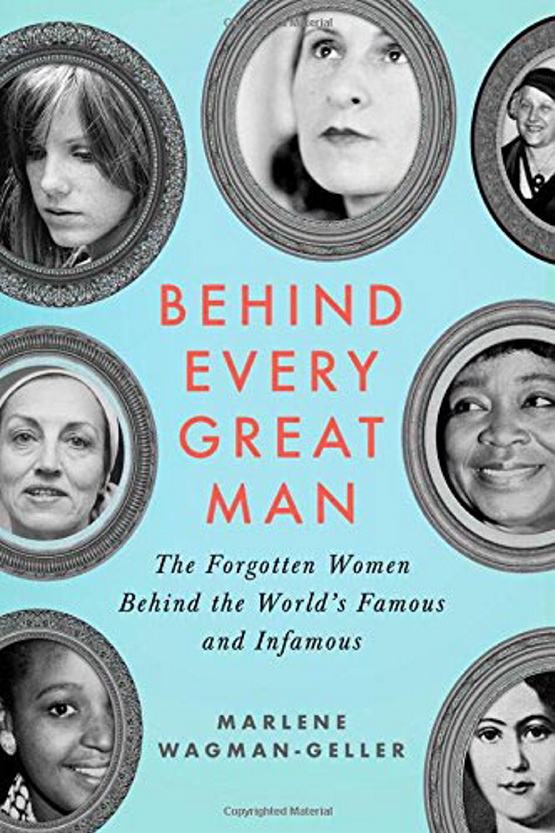Sunday was International Women’s Day, and a viral video from the Bill, Hillary and Chelsea Clinton Foundation gave the message “we’re not there yet,” meaning we’ve got a long way to go before the end of the discrimination and oppression of women.
This is the sentiment inspired by Marlene Wagman-Geller’s “Behind Every Great Man: The Forgotten Women Behind the World’s Famous and Infamous,” a well-crafted exploration into the lives of 40 women who were coupled with some of history and pop culture’s most prominent.
The majority of these women did not have happy lives. Though the book provides exceptions (Jackie and Rachel Robinson and Douglas and Jean MacArthur stick out as relatively happy couples compared to the rest, though clearly they had their own battles), the majority of these men either were extensively unfaithful to their partners, abandoned their partners and/or children in times of need (Of Alfred Hitchcock and his wife Alma’s first and only child being born: “He was absent during the delivery, explaining he could not bear the suspense.”) or both.
Or worse.
Francoise Gilot, Pablo Picasso’s longtime girlfriend, decided to leave him after his public affairs and private verbal abuse, and he responded by blacklisting her in the art world and cut off all contact with her and their children for the rest of his life.
After Mahatma Gandhi’s wife, Kasturba, picked up the same scarce dietary habits at home as he did while imprisoned, he wrote “I am not in a position to come and nurse you. If it is destined that you should die, I think it is preferable that you should go before me.”
In a drunken, jealous rage, F. Scott Fitzgerald pointed a gun at wife Sheilah (her response: “Take it and shoot yourself, you son of a bitch. I didn’t pull myself out of the gutter to waste my life on a drunk like you”).
The list goes on.
But while much of the book resonates with the wide range of horrors these women went through at the hands of their lovers, its focus is their own strength and power that inspired change to the world.
Alma Hitchcock suggested, against her husband’s wishes, that Janet Leigh perish in the first third of “Psycho,” and that the infamous shower scene include music (Alfred wanted silence).
Gala Dali often dictated what her painter husband Salvador should paint.
Although she never received credit, Mileva Einstein collaborated with husband Albert on the theory of relativity.
That list goes on, too.
At times the cheekiness of the commentary can be a bit off-putting (Of Albert and Mileva Einstein’s relationship: “It was not love at first sight, but it was a meeting of minds – akin to E meeting mc2.”). And in the chapter on Pamela Courson, girlfriend of The Doors’ Jim Morrison, the author refers to the couples that are interred in the eerily romantic Pere Lachaise in Paris, including Abelard and Heloise, Gertrude Stein and Alice B. Toklas (the one lesbian couple featured in the book) and Simone de Beauvoir and Jean-Paul Sartre – the last of which is false; they are buried side by side at Montparnasse.
These distractions aside, the book’s easily digestible format of short chapters noting the highs and lows of these women’s lives is attention-grabbing and enlightening, proving that although we might not know their stories, we should.
In the issue of gender equality, we may not be there yet, as Sunday’s video reminds us. But giving a voice to women like these is a vital step.
Send questions/comments to the editors.



Success. Please wait for the page to reload. If the page does not reload within 5 seconds, please refresh the page.
Enter your email and password to access comments.
Hi, to comment on stories you must . This profile is in addition to your subscription and website login.
Already have a commenting profile? .
Invalid username/password.
Please check your email to confirm and complete your registration.
Only subscribers are eligible to post comments. Please subscribe or login first for digital access. Here’s why.
Use the form below to reset your password. When you've submitted your account email, we will send an email with a reset code.